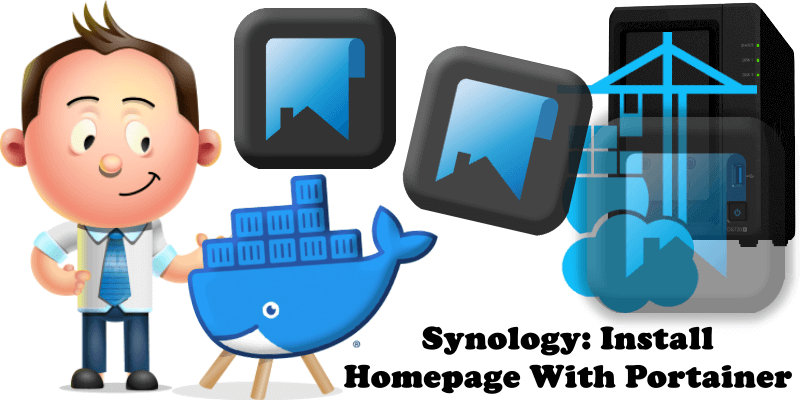
My previous guide for Homepage involved the use of Task Scheduler. Today I’m offering a recommended and excellent alternative for installing the latest Homepage version via Portainer. Homepage is a highly customizable homepage. You can use it as a dashboard for your docker applications. You can also add bookmarks. Homepage is a dashboard alternative to Flame, Dashy and Homarr. The only boring thing about the homepage app is that you have to edit the .yaml files manually to insert your own docker applications address or bookmarks. On the other hand, once set, its strong points are its speed and clean graphics. In this step by step guide I will show you how to install Homepage on your Synology NAS using Docker & Portainer.
This guide works perfectly with the latest Homepage v1.7.0 release.
STEP 1
Please Support My work by Making a Donation.
STEP 2
Install Text Editor via Synology “Package Center”. (Mandatory STEP.) If you already have Text Editor installed on your Synology NAS, skip this STEP.
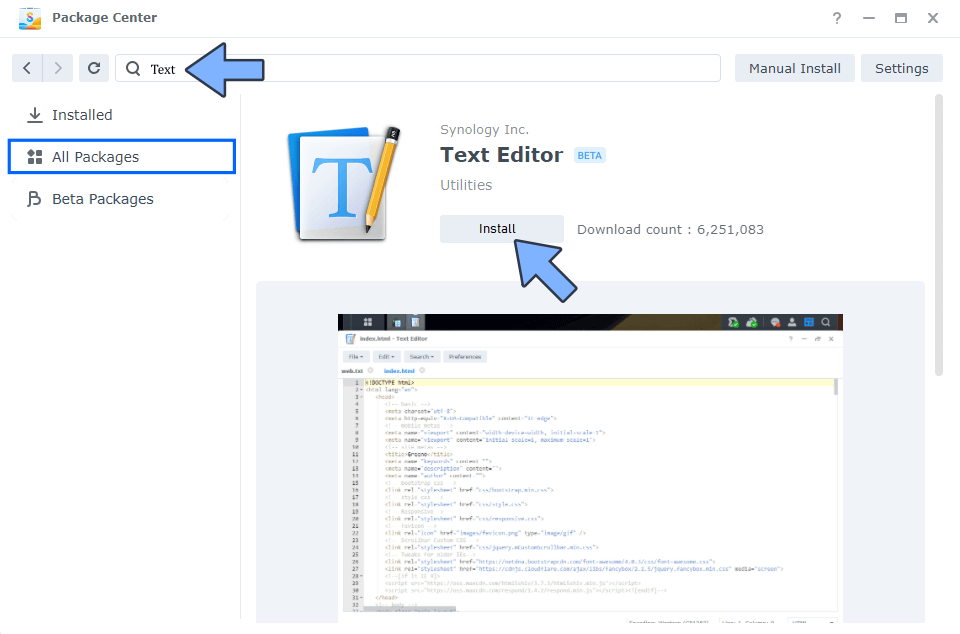
STEP 3
Install Portainer using my step by step guide. If you already have Portainer installed on your Synology NAS, skip this STEP. Attention: Make sure you have installed the latest Portainer version.
STEP 4
Go to File Station and open the docker folder. Inside the docker folder, create one new folder and name it homepage. Follow the instructions in the image below.
Note: Be careful to enter only lowercase, not uppercase letters.
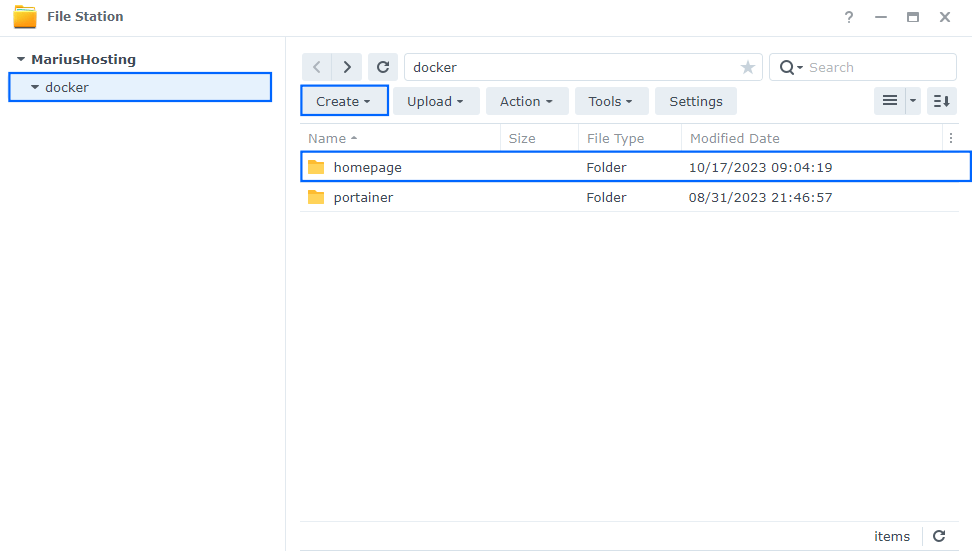
STEP 5
Now create one new folder inside the homepage folder that you created at STEP 4 and name it public. Follow the instructions in the image below.
Note: Be careful to enter only lowercase, not uppercase letters.
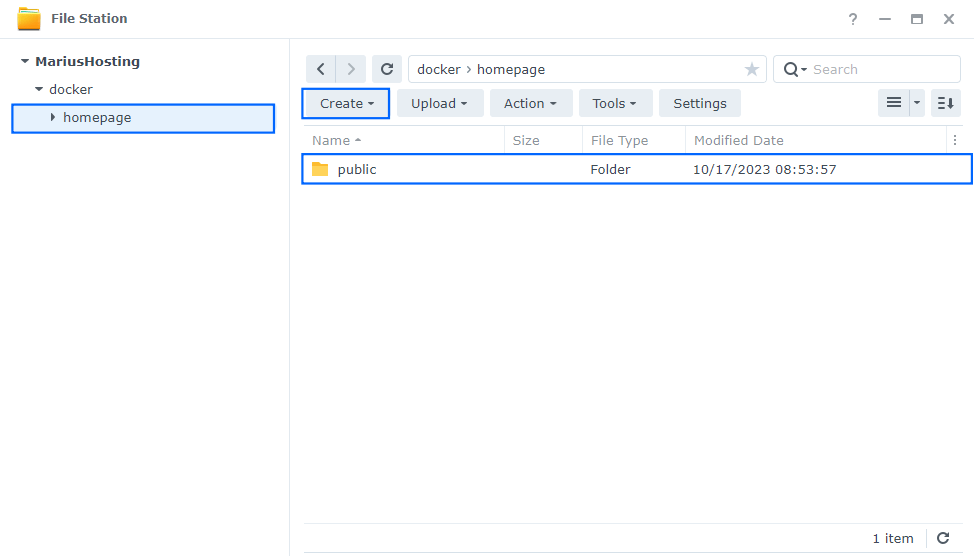
STEP 6
Log into Portainer using your username and password. On the left sidebar in Portainer, click on Home then Live connect. Follow the instructions in the image below.

On the left sidebar in Portainer, click on Stacks then + Add stack. Follow the instructions in the image below.

STEP 7
In the Name field type in homepage. Follow the instructions in the image below.
services:
homepage:
container_name: Homepage
image: gethomepage/homepage:latest
mem_limit: 4g
cpu_shares: 768
security_opt:
- no-new-privileges:true
environment:
HOMEPAGE_ALLOWED_HOSTS: 192.168.1.18:3550 #You can also add your synology.me DDNS separated by comma like 192.168.1.18:3550, homepage.yourname.synology.me
PUID: 1026
PGID: 100
ports:
- 3550:3000
volumes:
- /volume1/docker/homepage:/app/config:rw
- /volume1/docker/homepage/public:/app/public/images:rw
- /var/run/docker.sock:/var/run/docker.sock
restart: on-failure:5
Note: Before you paste the code above in the Web editor area below, change the value for HOMEPAGE_ALLOWED_HOSTS and type in your local NAS IP followed by :3550
Note: Before you paste the code above in the Web editor area below, change the value numbers for PUID and PGID with your own values. (Follow my step by step guide on how to do this.)
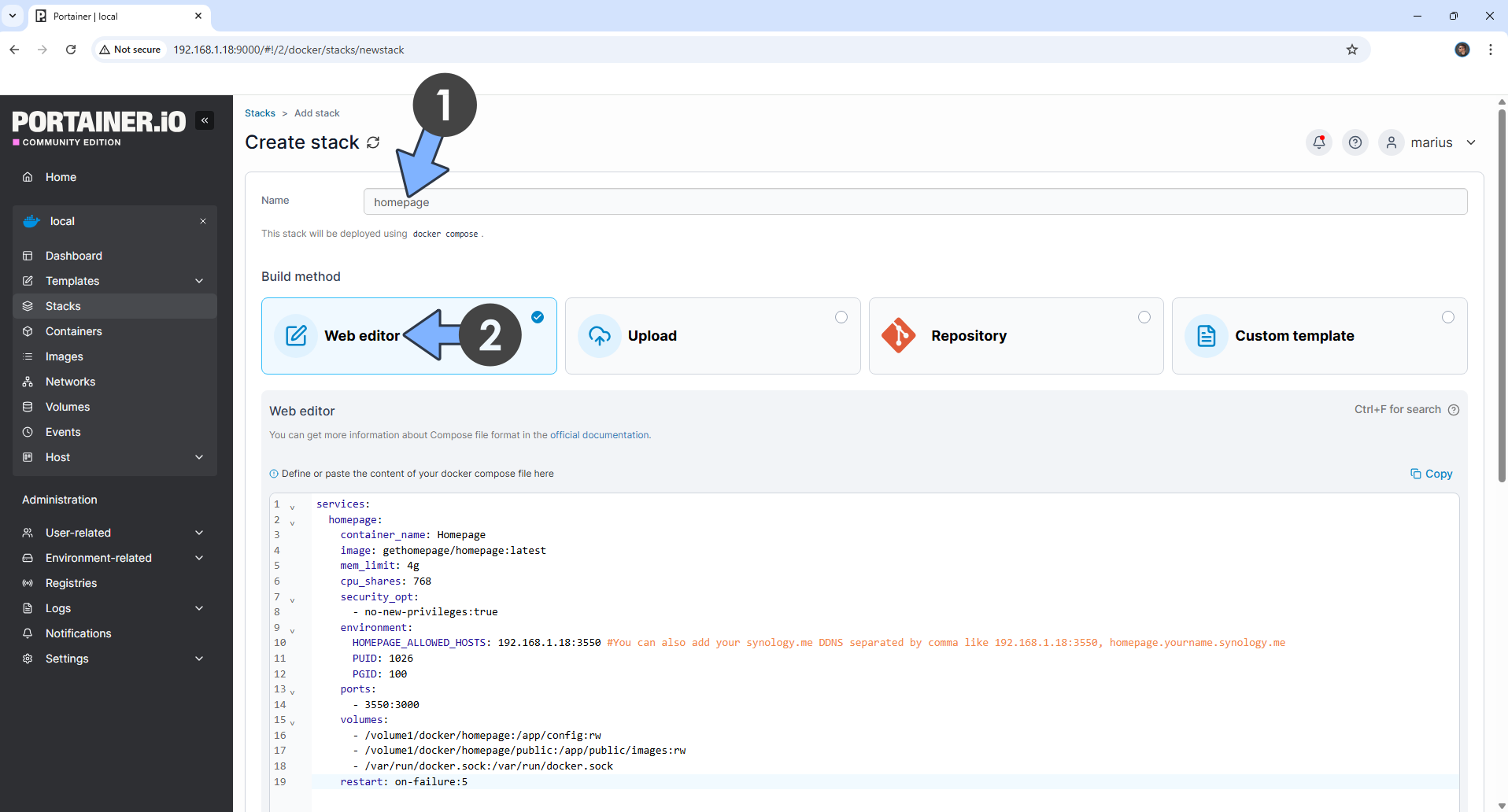
STEP 8
Scroll down on the page until you see a button named Deploy the stack. Click on it. Follow the instructions in the image below. The installation process can take up to a few minutes. It will depend on your Internet speed connection.
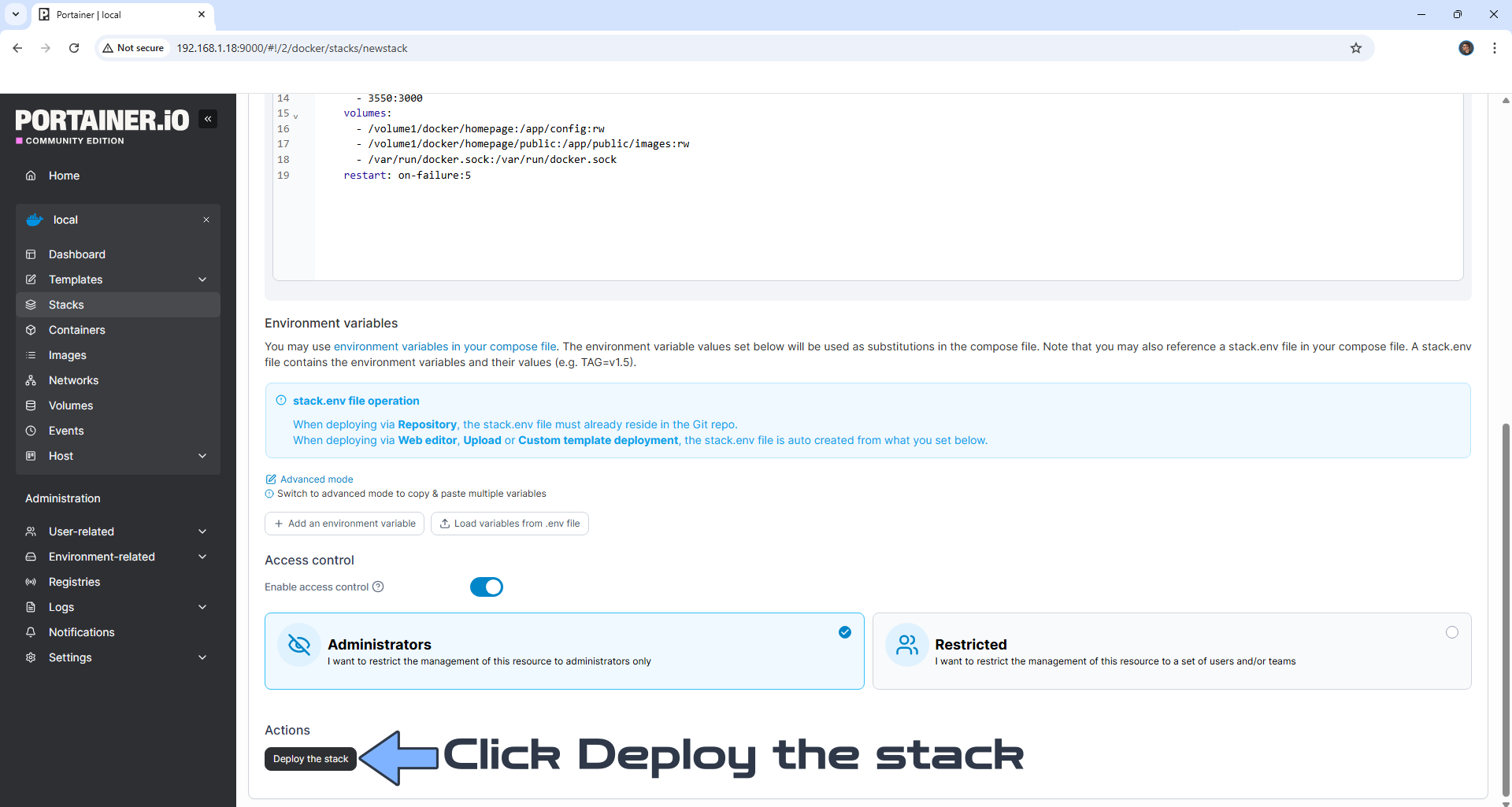
STEP 9
If everything goes right, you will see the following message at the top right of your screen: “Success Stack successfully deployed“.

STEP 10
🟢Please Support My work by Making a Donation. Almost 99,9% of the people that install something using my guides forget to support my work, or just ignore STEP 1. I’ve been very honest about this aspect of my work since the beginning: I don’t run any ADS, I don’t require subscriptions, paid or otherwise, I don’t collect IPs, emails, and I don’t have any referral links from Amazon or other merchants. I also don’t have any POP-UPs or COOKIES. I have repeatedly been told over the years how much I have contributed to the community. It’s something I love doing and have been honest about my passion since the beginning. But I also Need The Community to Support me Back to be able to continue doing this work.
STEP 11
The installation process can take up to a few seconds/minutes. It will depend on your Internet speed connection. Now open your browser and type in http://Synology-ip-address:3550 Follow the instructions in the image below.
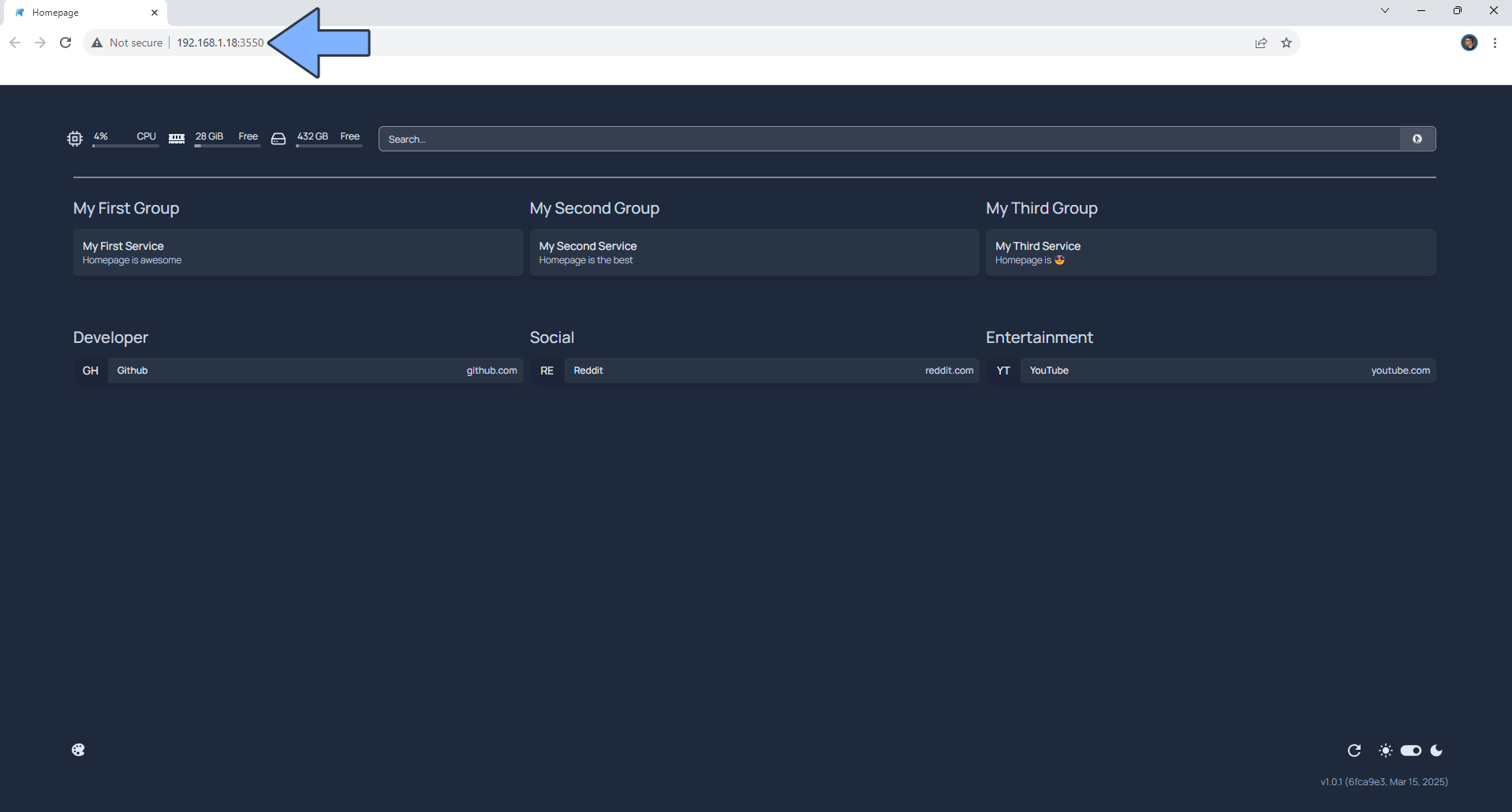
STEP 12
Go to File Station then open the homepage folder that you have previously created at STEP 4. Inside the homepage folder, you will find some .yaml files. Now let’s modify, for example, the bookmarks.yaml file, to add your own bookmark address.
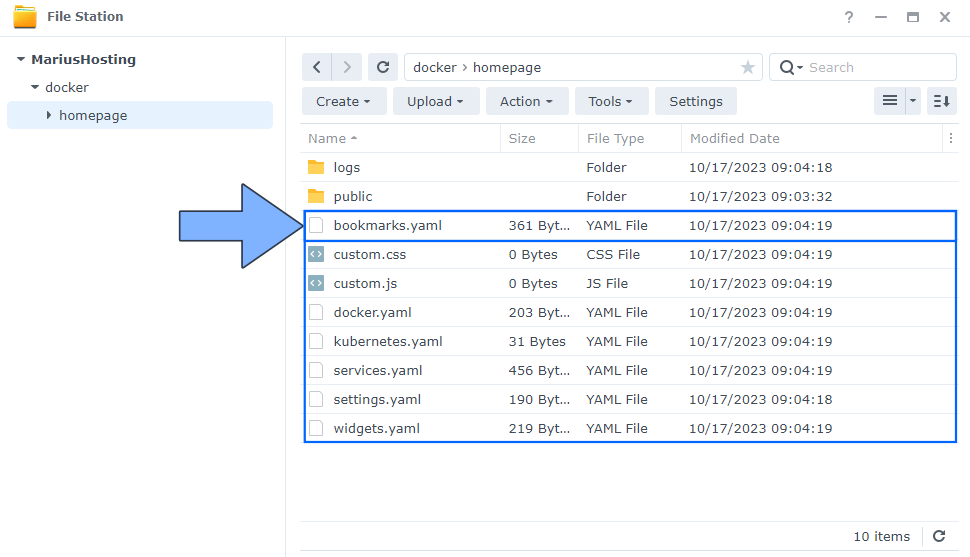
STEP 13
Add your own bookmark address by following the instructions in the image below. Click Save.
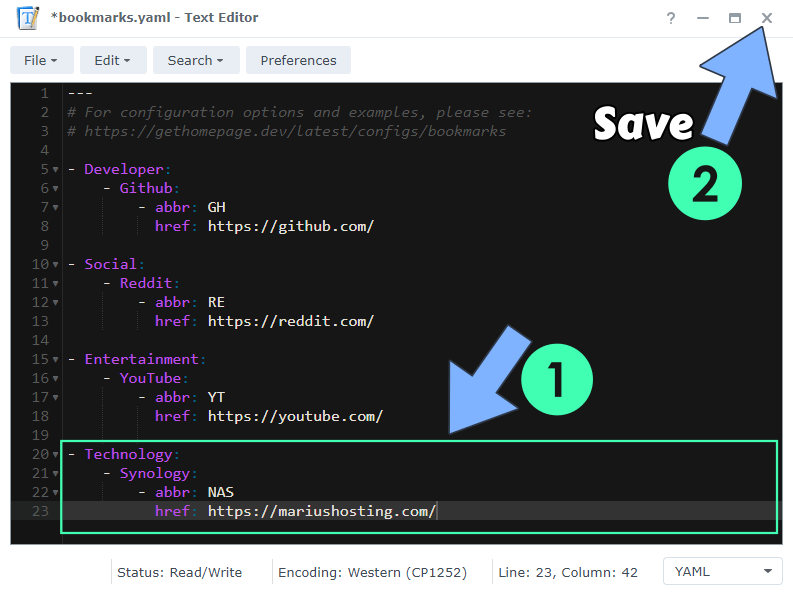
STEP 14
Go back to your Homepage Dashboard to see your modified bookmarks. You can change the background color to fit your needs. Follow the instructions in the image below.
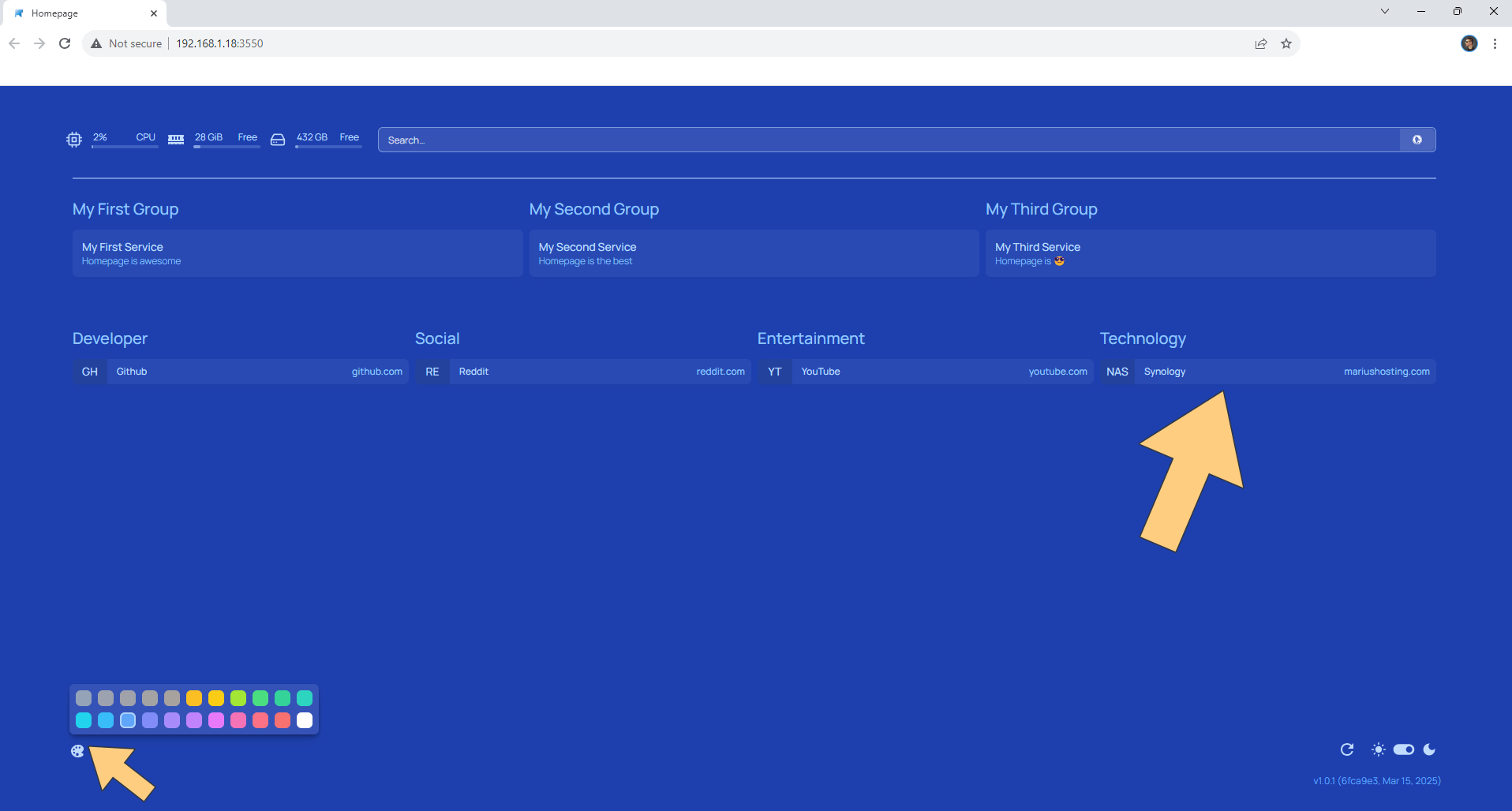
Enjoy Homepage & Read the Full documentation on how to modify the .yaml files.
STEP 15
To prevent containers like Pihole and others from going into timeout when you are looking for integrations in Homepage, remember to DISABLE/UNCHECK the Multiple Gateways option in network settings in DSM.
If you encounter issues by using this container, make sure to check out the Common Docker issues article.
Note: If you want to run the Homepage container over HTTPS, check How to Run Docker Containers Over HTTPS. In order to make Homepage work via HTTPS, it’s mandatory to activate WebSocket.
Note: Can I run Docker on my Synology NAS? See the supported models.
Note: How to Back Up Docker Containers on your Synology NAS.
Note: Find out how to update the Homepage container with the latest image.
Note: How to Free Disk Space on Your NAS if You Run Docker.
Note: How to Schedule Start & Stop For Docker Containers.
Note: How to Activate Email Notifications.
Note: How to Add Access Control Profile on Your NAS.
Note: How to Change Docker Containers Restart Policy.
Note: How to Use Docker Containers With VPN.
Note: Convert Docker Run Into Docker Compose.
Note: How to Clean Docker.
Note: How to Clean Docker Automatically.
Note: Best Practices When Using Docker and DDNS.
Note: Some Docker Containers Need WebSocket.
Note: Find out the Best NAS Models For Docker.
Note: Activate Gmail SMTP For Docker Containers.
This post was updated on Saturday / November 29th, 2025 at 12:25 AM
